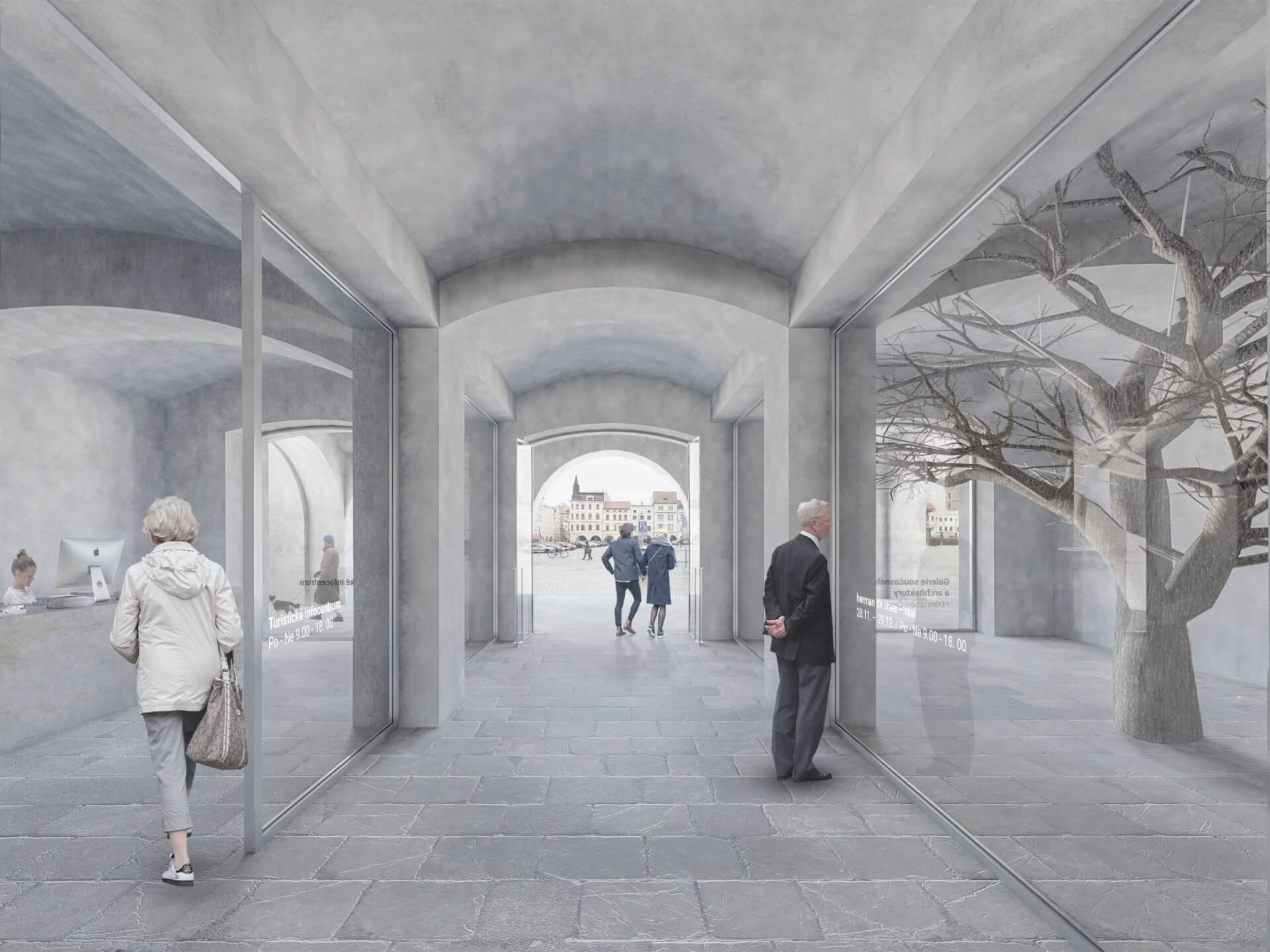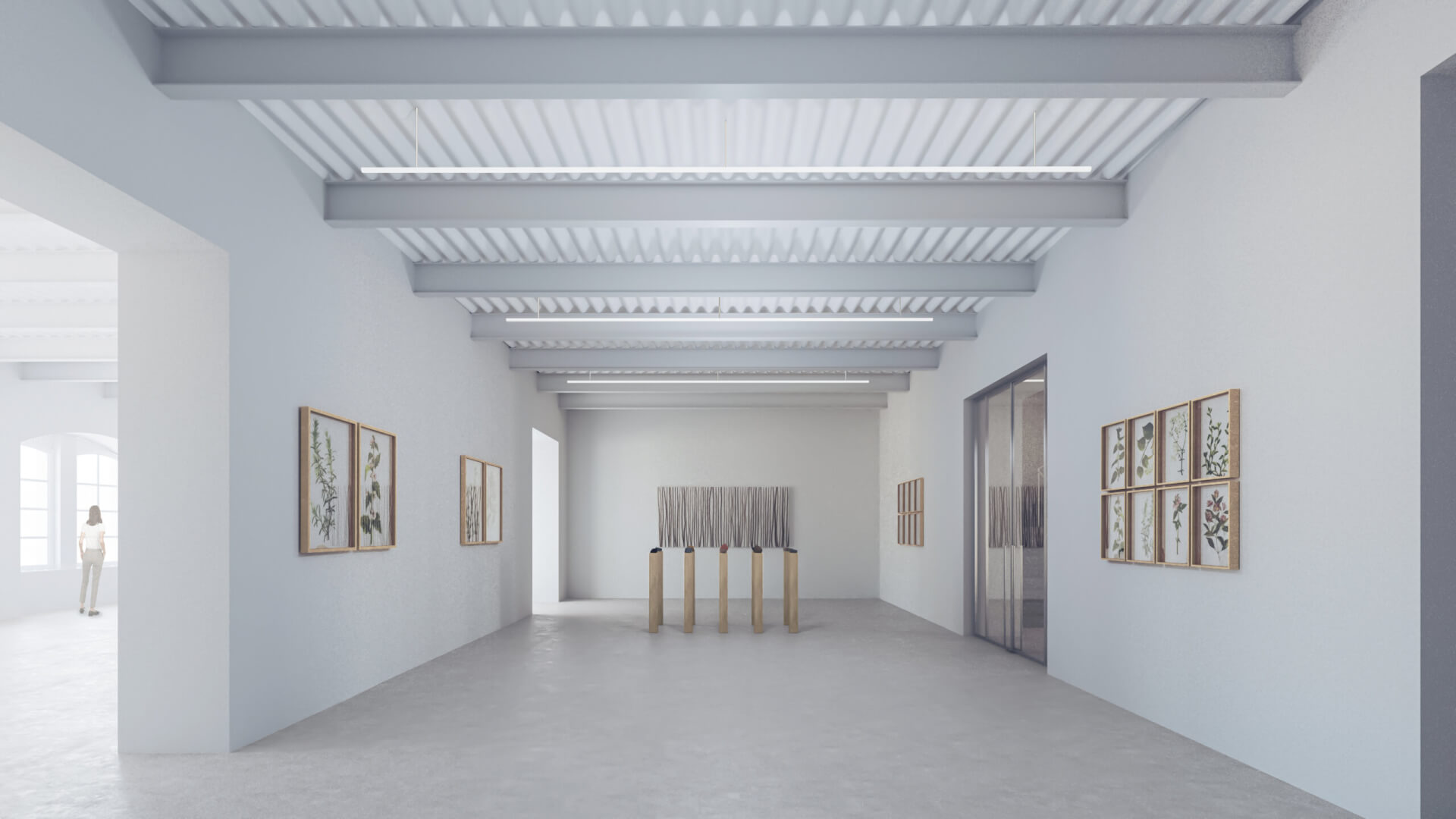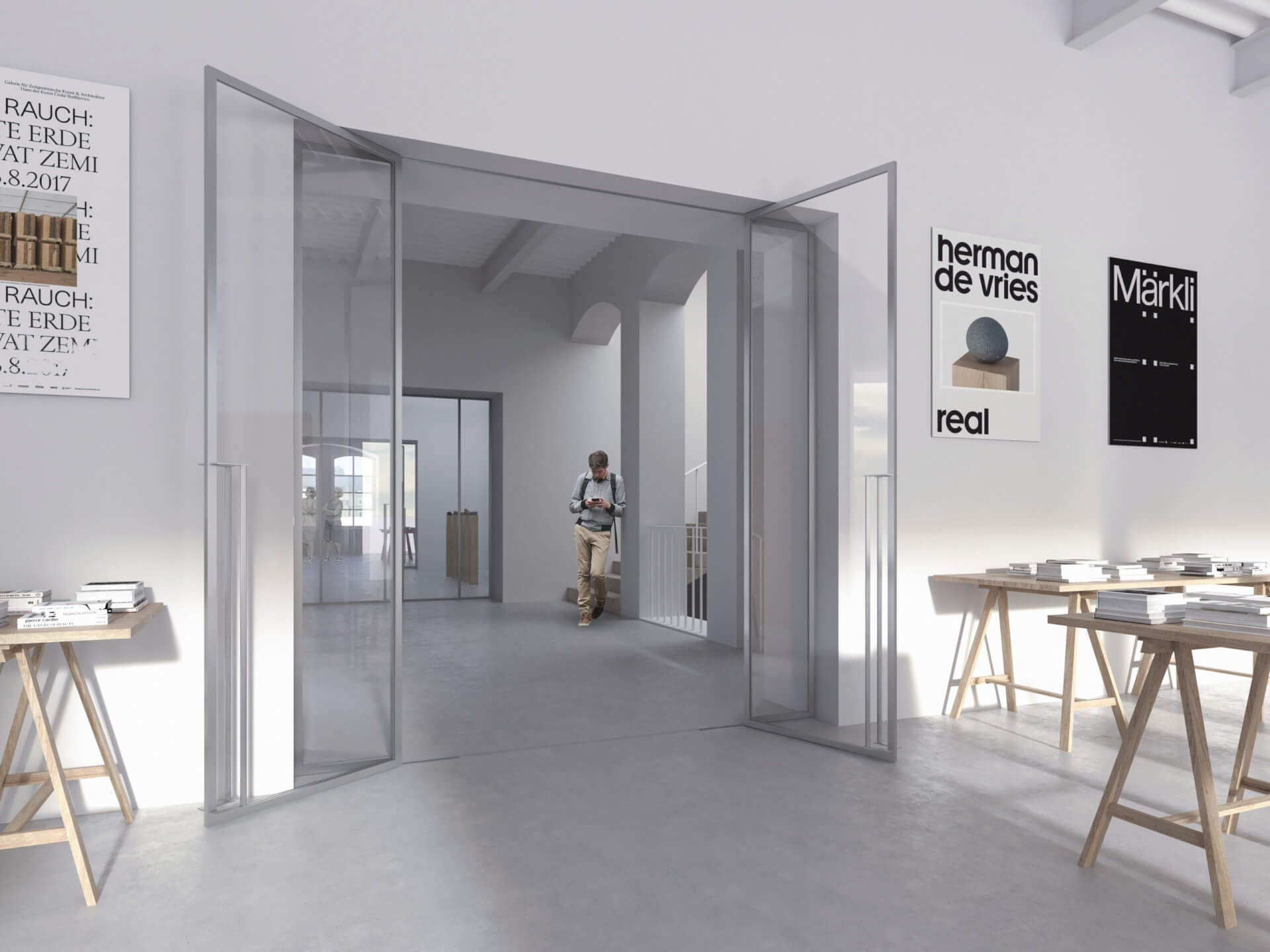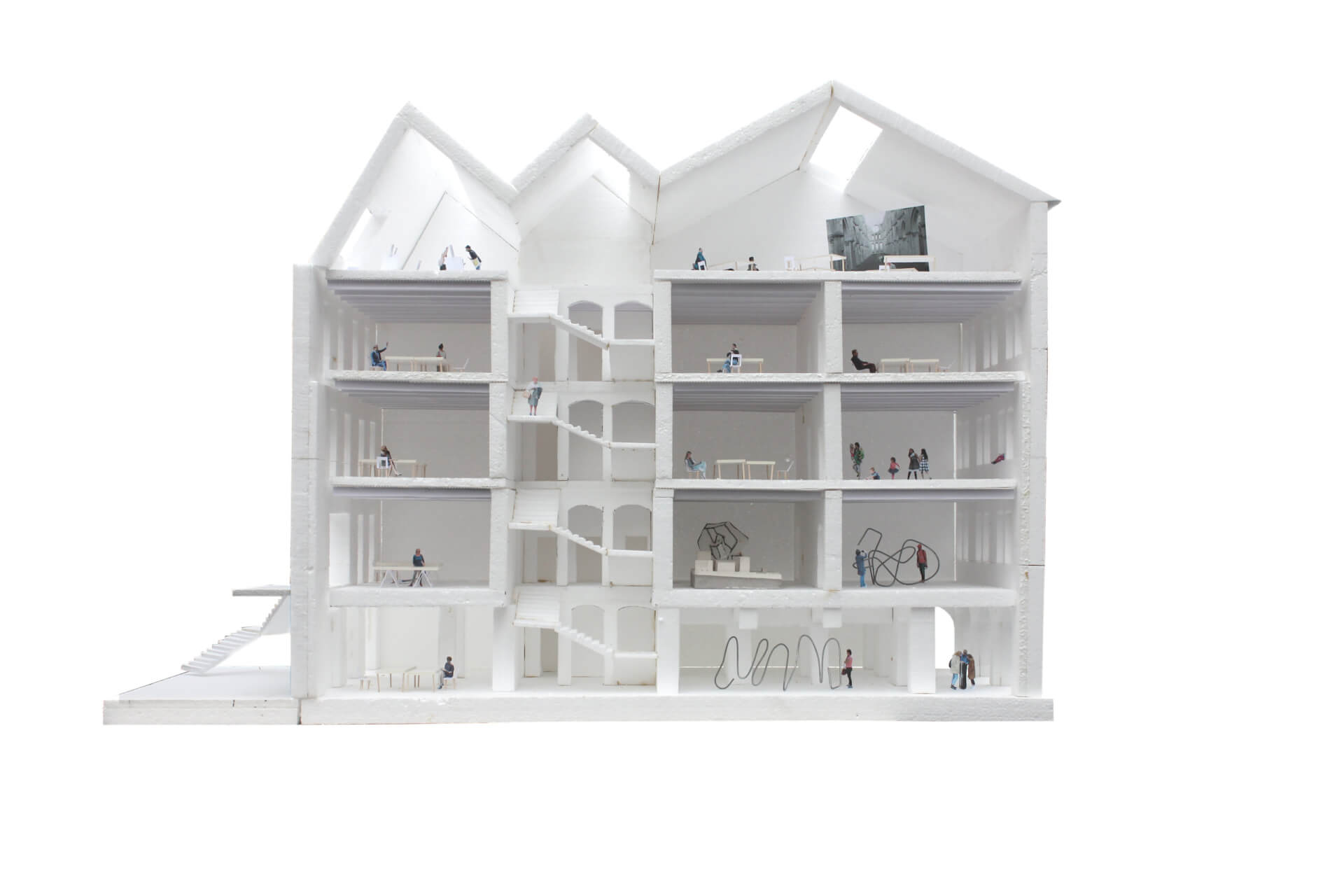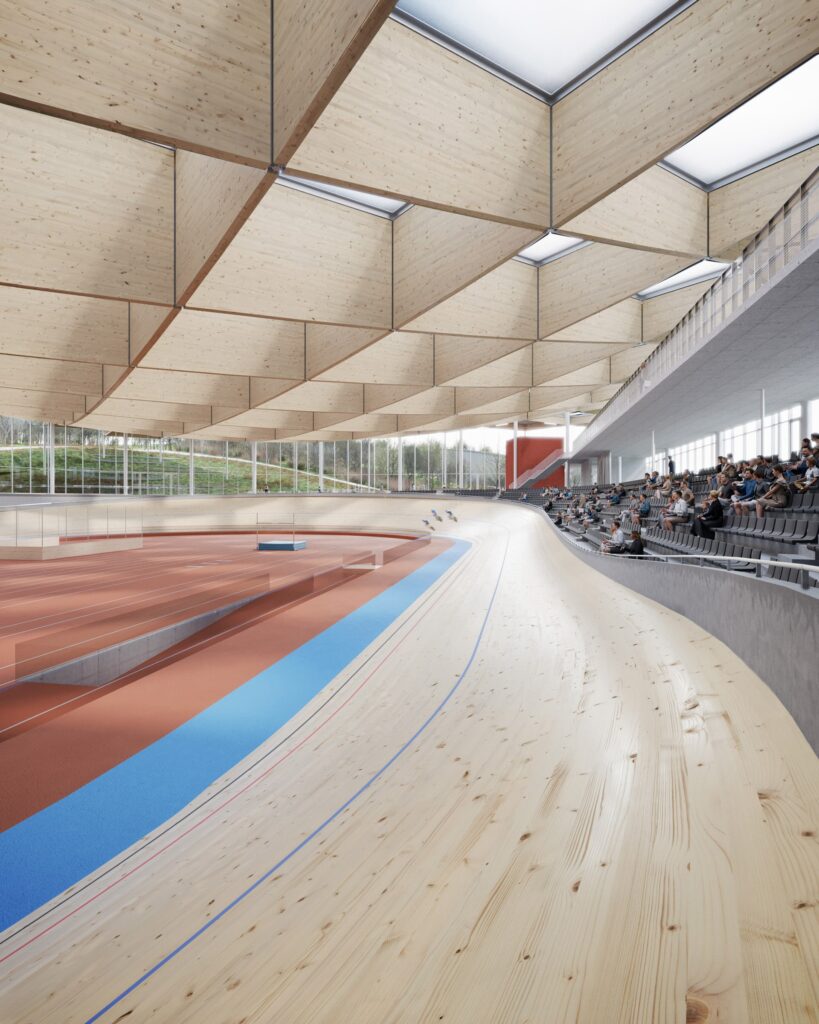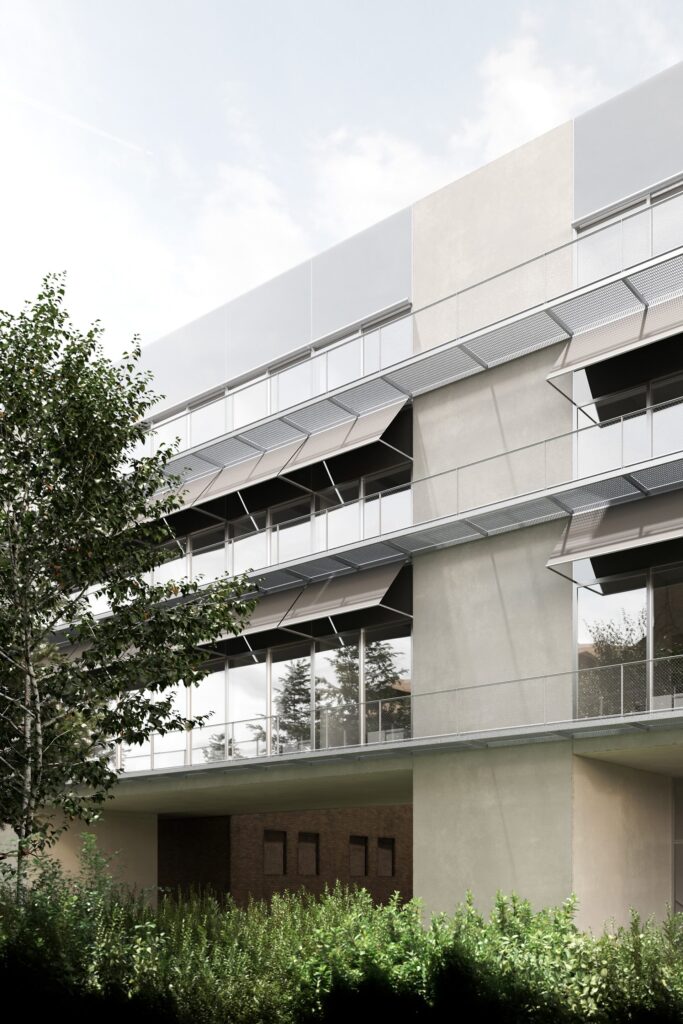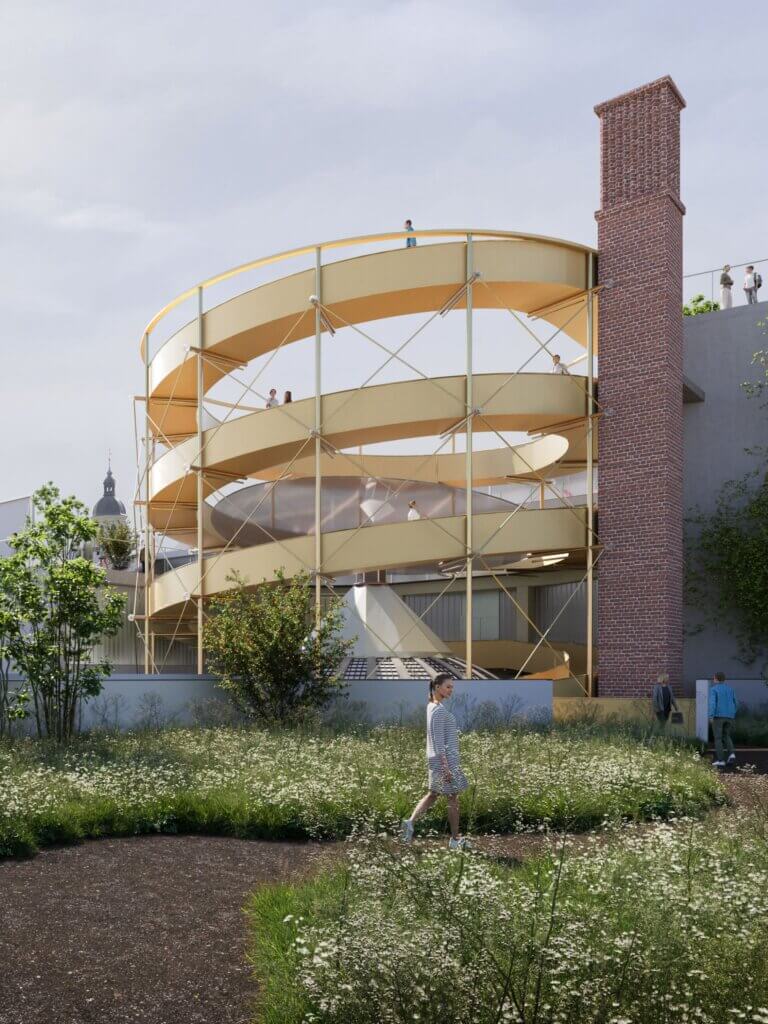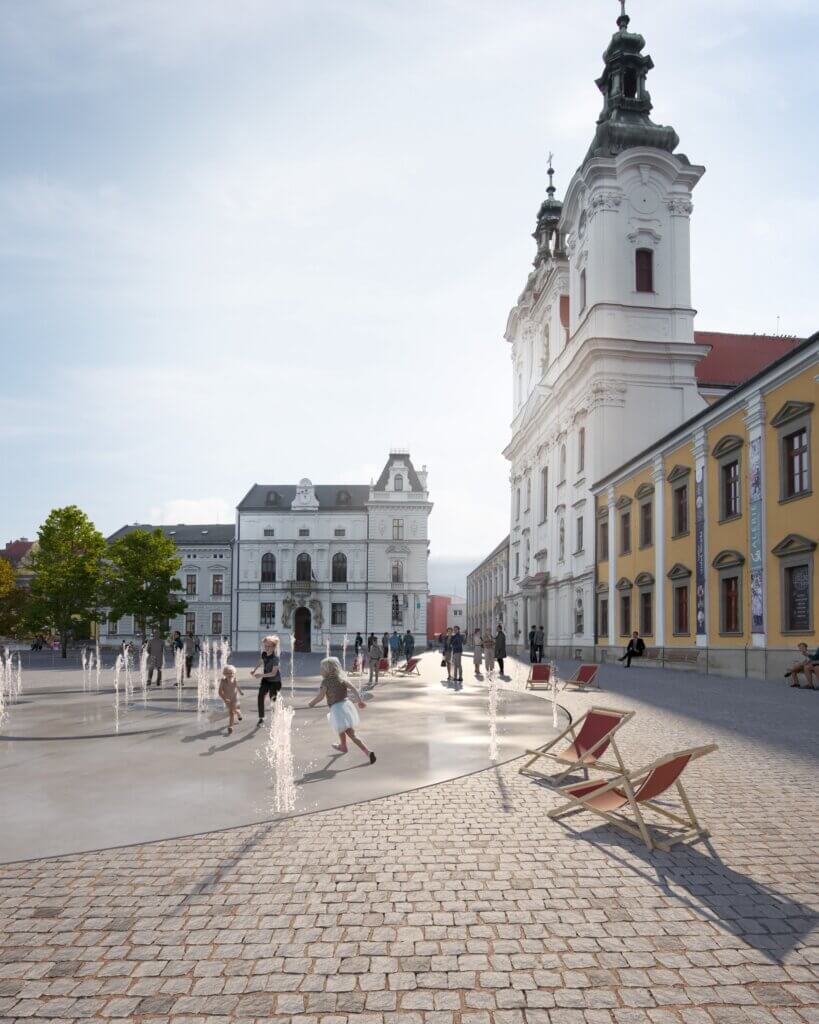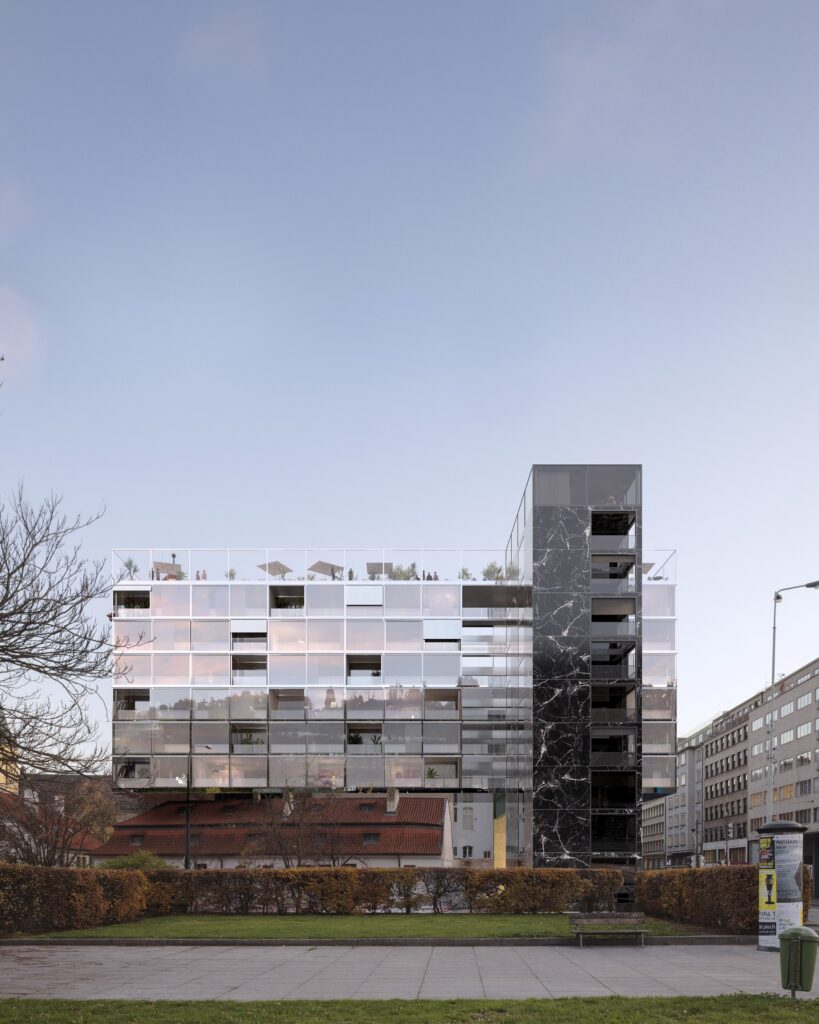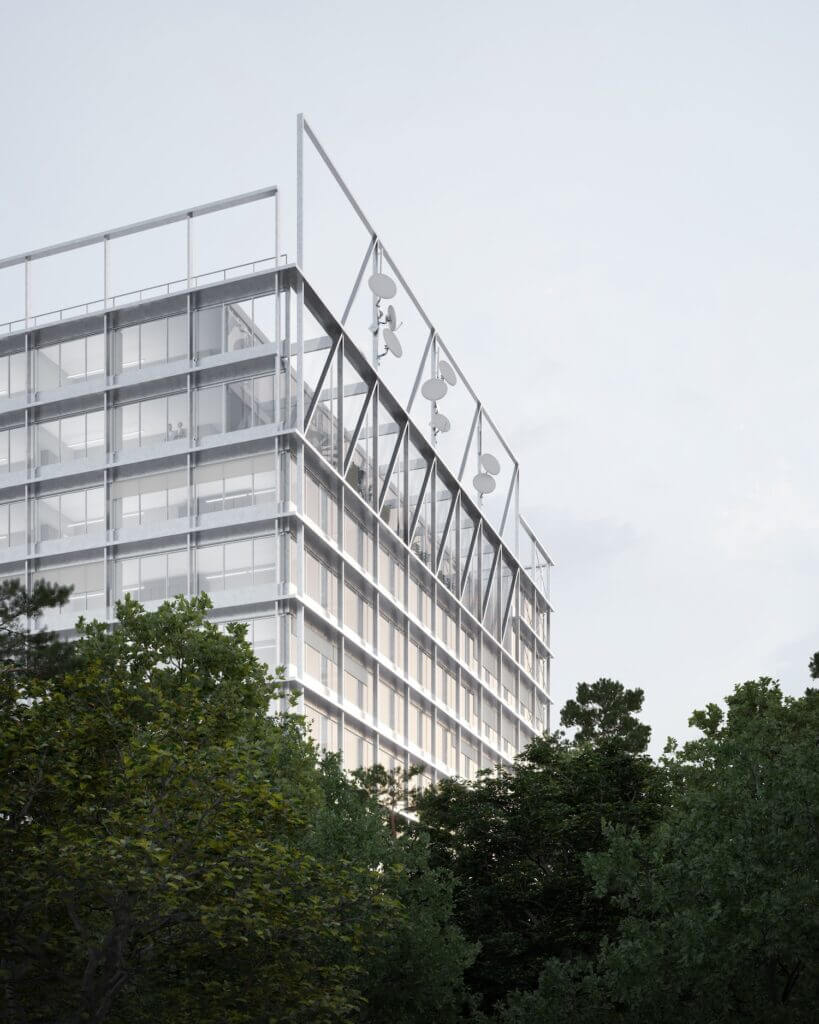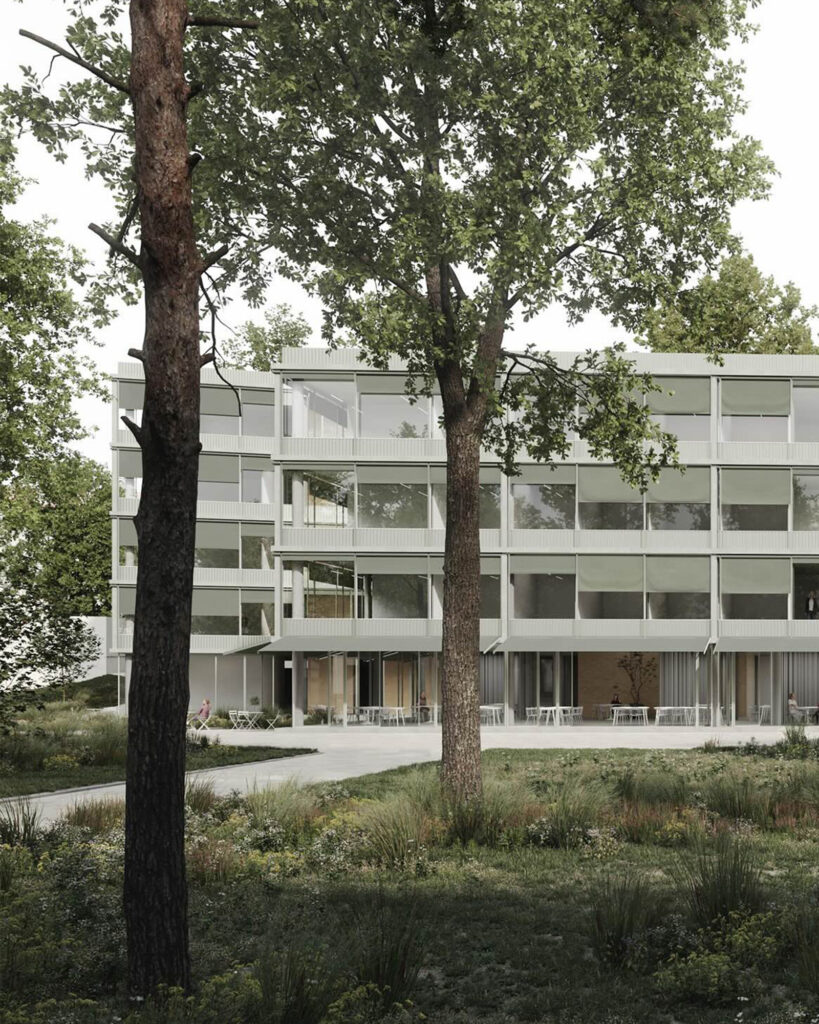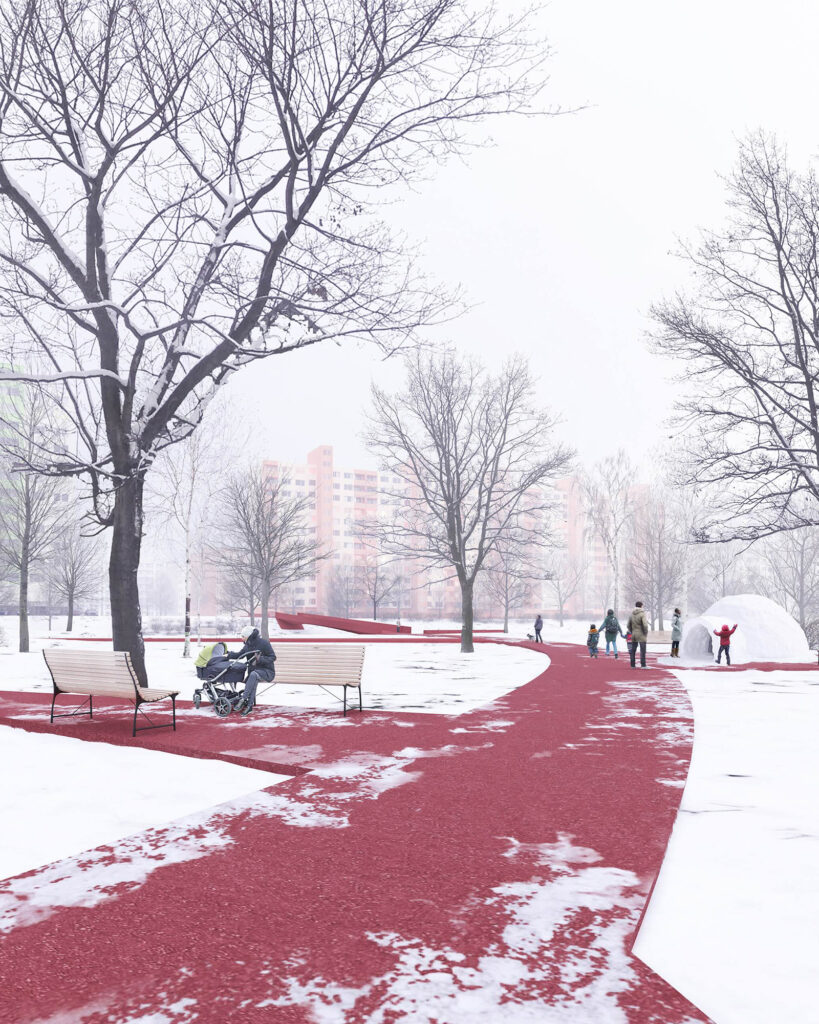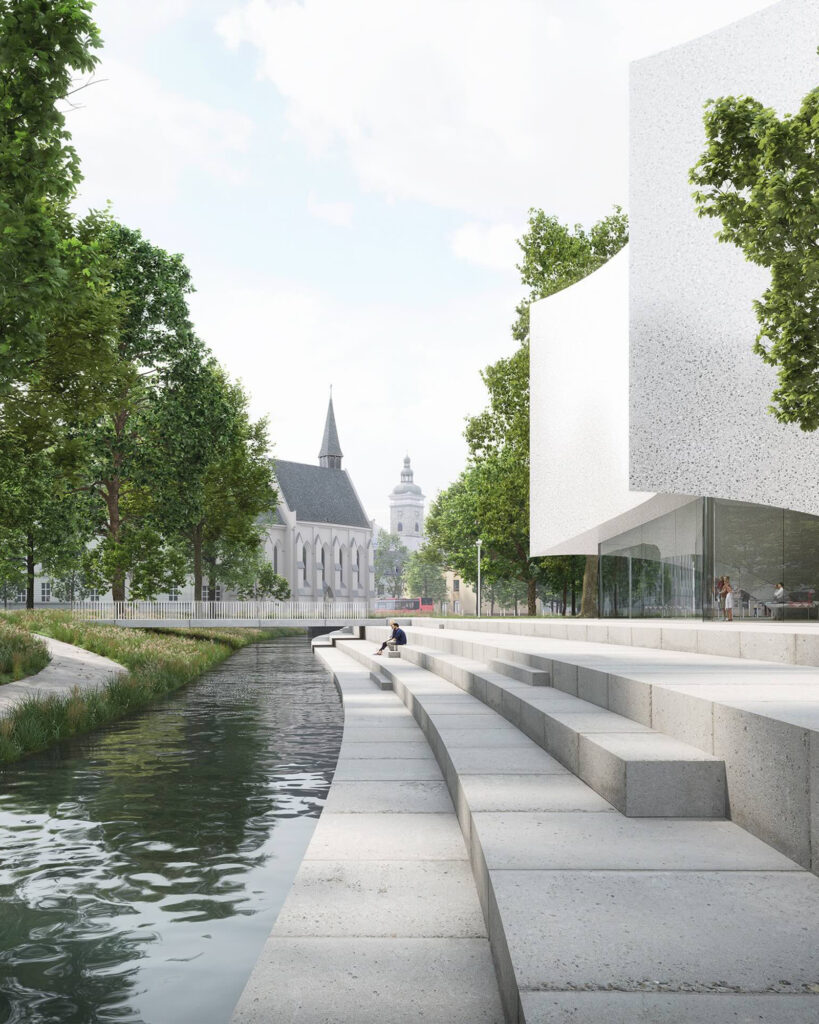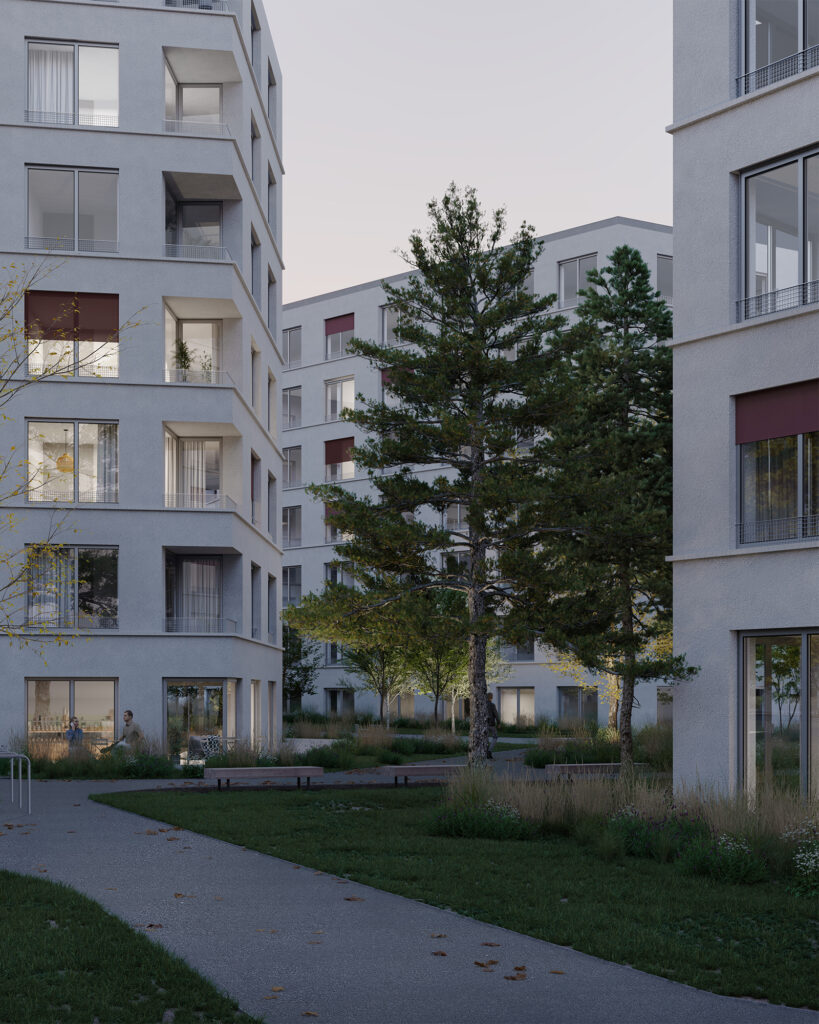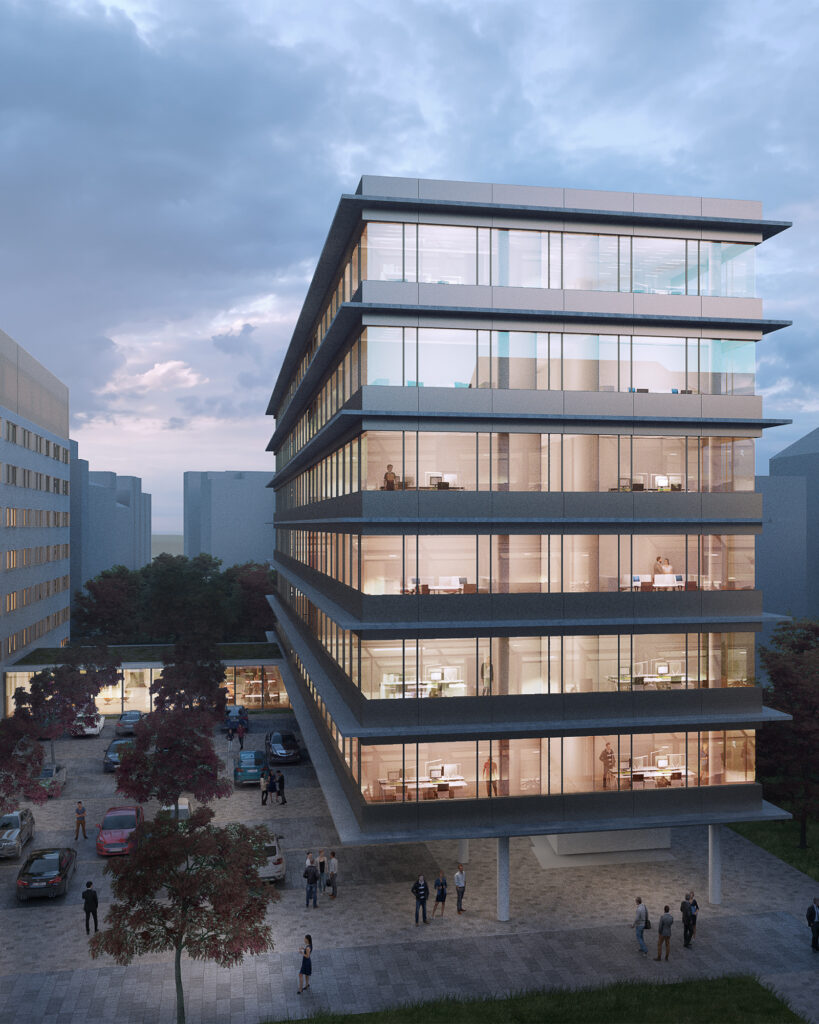House of Art
The program of the Centre of Contemporary Art and Architecture and the way the institution works make for a rather challenging architectural task. The proposal had to address questions relating to how a contemporary gallery space works and how exhibiting is done. In a time when art is an incredibly dynamic discipline because it absorbs various types of media including digital presentation, performance and scientific methodology, the major challenge that the architect faces is to define a concept of space that can accommodate all of these multidisciplinary expressions. Equally importantly, another issue the architects had to tackle with regards to the House of Art in Budweis (České Budějovice) was how to reflect this heterogeneity and variety in a listed building situated right on the main square (Přemysla Otakara II).
